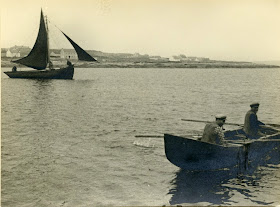'Performing the Archive' Conference
National University of Ireland, Galway
22 – 24 July 2015
Co-sponsored by the American Society for Theatre Research
Speakers:
Professor Tracy C. Davis (Northwestern University)
Dr. Doug L. Reside (New York Public Library)
Professor Catherine Cole (University of California, Berkeley)
Dr. Hugh Denard (Trinity College, Dublin)
Professor Patrick Lonergan (National University of Ireland, Galway)
Professor Lionel Pilkington (National University of Ireland, Galway)
Dr. Emilie Pine (University College, Dublin)
'Performing the Archive' responds to new innovations in archival practices including digital methodologies and will bring together formative thinking among scholars, artists and archivists engaged in working with archival materials and on research and performance projects to explore the uses and possibilities of the archive today from theoretical and methodological perspectives.
We will debate:
• What is the status of archival research methodologies in published research and graduate training today?
• What are the possibilities of collaboration between researchers and practitioners working together to remount work based on the archives or research on new material? What working models exist and what have yet to be imagined?
• How has the digital humanities begun to reshape the possibilities of archival engagement?
• How can we support the labour of not only archival research methodologies but the maintenance of the archives themselves? How does the holding location of archives (university vs. community archive) affect the circulation of these resources? How can partnerships be expanded or reimagined?
• How has the cataloguing of new/recent archives contributed to new learning and change?
• Connection of archives, theatre and society: Documentary theatre and socially responsive theatre
• Theatre, Peace and Conflict – How memory of theatre and conflict, especially that of Northern Ireland, is newly understood and experienced through the archives and contributing to resolution and reconciliation
• The craft of the playwright: Drafting, editing and writing for stage or radio through adapting the archive
• How is contemporary performance shaped by memory of past performance?
This conference capitalizes on NUI Galway’s unparalleled strength in Irish theatre and literary archives, taking advantage of holdings including the Abbey Theatre Digital Archive and archives of Druid Theatre, Lyric Theatre Belfast, Taibhdhearc na Gaillimhe, Thomas Kilroy, Siobhan McKenna and the Galway Arts Festival, among others, to facilitate a national and international conversation about the place of archives in not only theatre and performance research and teaching, but arts practice and perception of theatre history more broadly.
Coinciding with the Galway Arts Festival, the conference will immerse participants in the living performance culture of Galway as the Galway Arts Festival links together artists from around the world to mount Ireland’s largest international arts festival.
Participants will take part in intensive working group sessions as well as participate in keynote and plenary sessions with leading scholars, archivists and performers working at the intersection of practice and research.
You may propose either an individual paper or panel of three speakers. Abstracts for individuals for individual papers should be no more than 350 words in length and panels should submit their panel title and grouped abstracts to be considered. Proposed papers can address practical projects in the area of digitization, curation, or archives administration as well as presenting creative, scholarly or theoretical case studies.
Individuals will also designate a working group to be associated with for an intensive workshop during the conference.
You can apply to the following strands:
• Archival Materials In/As Performance
• Digitization: Methodology and Ethics
• Early-Mid-Twentieth Century Irish Theatre
• Irish Theatre After Beckett
• Conflict, Memory and Trauma
• Scenography and Theatre Technologies
Please submit a 350-word abstract for your proposed paper as a PDF file ONLY with brief bio by 30 March 2015 to performarchive2015@gmail.com
For more information, please contact Barry Houlihan (barry.houlihan@nuigalway.ie), Charlotte McIvor (charlotte.mcivor@nuigalway.ie) or Ian Walsh (ian.walsh@nuigalway.ie).
http://performingthearchive2015.wordpress.com/
http://www.library.nuigalway.ie/collections/archives/
http://www.nuigalway.ie/drama/
http://nuigarchives.blogspot.ie
@NUIGarchives
@NUIGDrama








